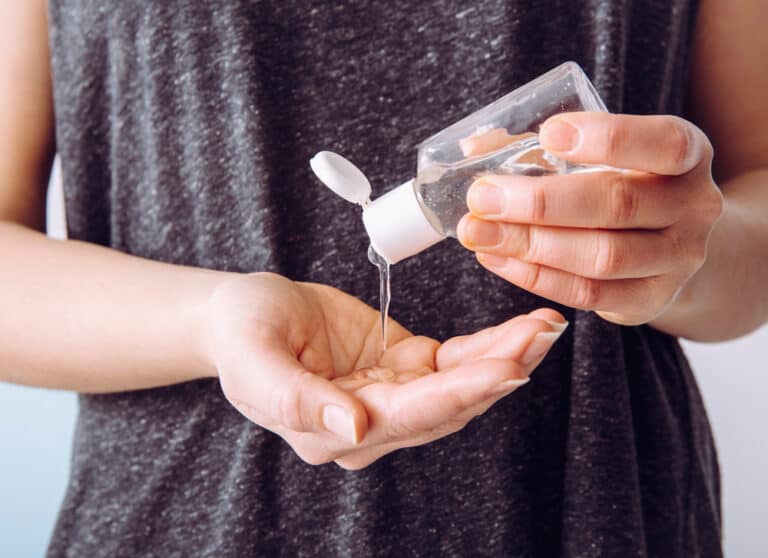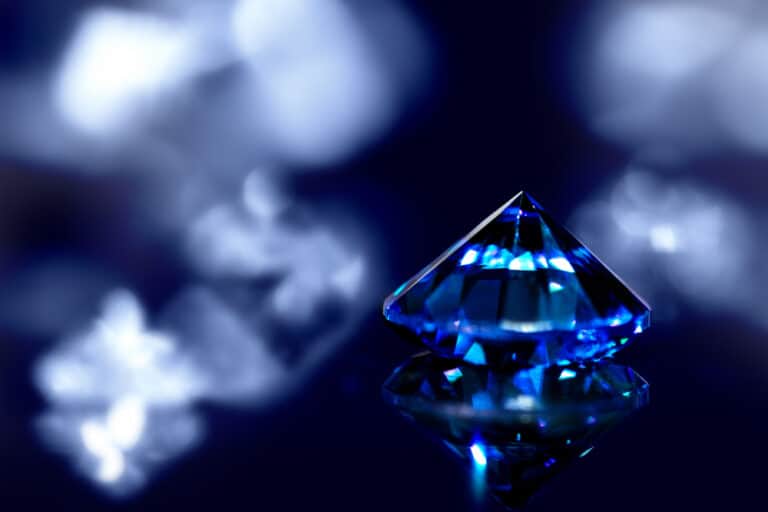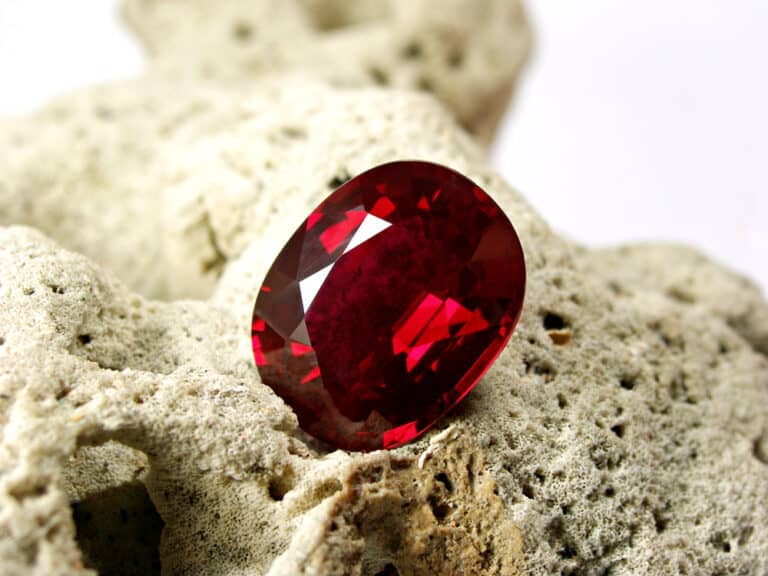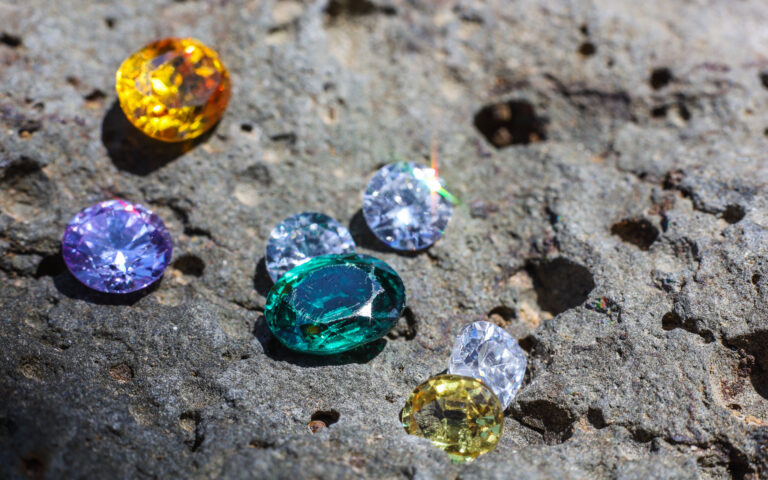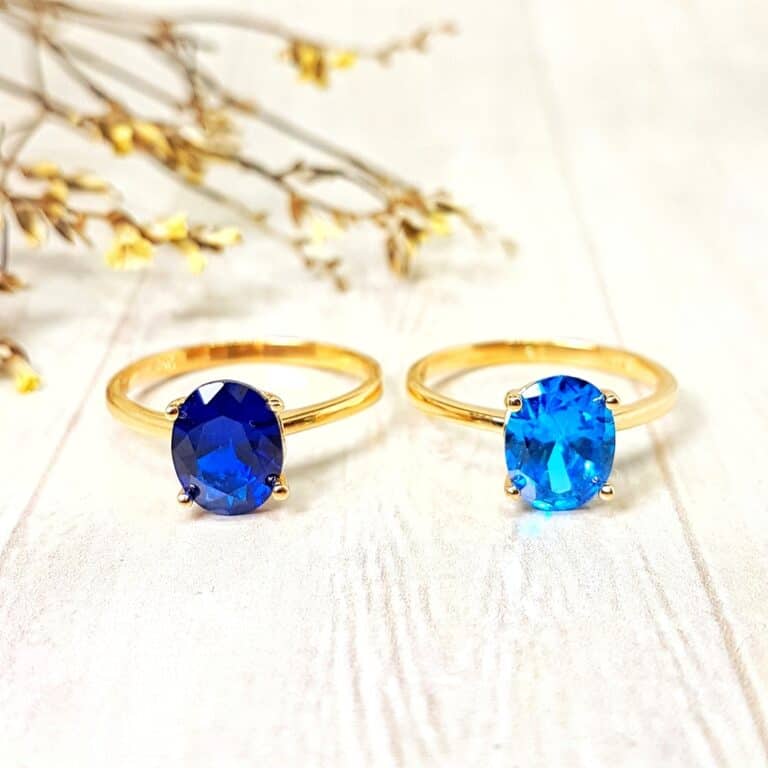Sapphires have an incredibly rich history that has involved lore as well as fact. They have traditionally been associated with nobility. In ancient Greece and Rome, the royalty considered that Sapphires protected them from evil, while priests and clergy have worn them through the ages, where the color blue represents access to heaven.
It is possible to scratch Sapphires, but they can only be scratched by harder materials. To date, there are only two materials that qualify at a higher level on the Mohs scale of hardness, namely Diamonds and Lonsdaleite, which appear one level higher on the scale.
Sapphires are incredibly beautiful gems, and while they are often thought of as only being blue, they come in various colors, including Yellow, Black, White, Green, Pink, Purple, Grey, Orange, and Brown.
Sapphires Can Be Scratched
The hardness of gems is determined by their ability to resist scratching.
This measurement was formalized according to a standardized scale developed by a German mineralogist Friedrich Mohs (born 1773, died 1839).
The scale was derived by studying which gem could scratch others. The diamond was the gem that could scratch all the others yet couldn’t be scratched.
In terms of the scale, diamonds were placed in the number ten position, indicating they were the hardest.
The results of this exercise are the list below.
| Mohs scale of hardness | Gem | Note |
| 10 | Diamond | It scratches Rubies, Corundum, and Sapphires |
| 9 | Corundum | It scratches Topaz |
| 9 | Rubies | It scratches Topaz |
| 9 | Sapphire | It scratches Topaz |
| 8 | Topaz | It scratches Quartz |
| 7 | Quartz | It scratches window glass |
| 7 | Jadeite Jade | It scratches window glass |
| 6 | Feldspar | A steel file will scratch it |
| 6 | Nephrite Jade | A steel file will scratch it |
| 5 | Apatite | |
| 4 | Fluorite | A metal knife will scratch it |
| 3 | Calcite | A copper coil will scratch it |
| 2 | Gypsum | |
| 1 | Talc | A fingernail will scratch it |
The result is that Sapphires are graded as the second hardest gem and share the position with Corundum and Rubies.
Based on the Mohs scale of hardness, sapphires can only be scratched by another, harder material.
Diamonds are the hardest natural material that can scratch diamonds. However, an even harder material has been discovered called Lonsdaleite (which also has the name “hexagonal diamond” because it is made of carbon and appears similar in structure to a diamond.)
Based on the current science, only Diamonds and Lonsdaleite can scratch Sapphire.
Are Sapphires Durable And Therefore Wearable?
The hardness of a gem is not the only measure to consider when deciding how wearable it is.
Diamonds may be at the top of the hardness scale; however, hitting a diamond with a hammer will cause it to shatter into many pieces.
If you hit a Quartz stone with a hammer, it will simply break in two – even though it only has a hardness rating of 7.
If you hit jade with the same hammer, it won’t break and instead will sound like a bell.
To truly evaluate a gem’s durability, it must be evaluated against the following factors.
- Hardness
- Tenacity
- Wearability
- Gemstone Cleavage
Hardness
This has already been discussed and relates to the gem’s ability to scratch other gems and resist scratching. Sapphires score a nine on this scale.
Sapphires scores a nine on the Mohs scale of hardness.
Tenacity
Tenacity refers to the gem’s ability to resist impacts or its resistance to being broken.
The tenacity scale measures the force needed to separate two of the gem’s surfaces along an identified crystallographic plane.
The tenacity of gems is scored on a scale with five possible results.
| Grading | Score | Gem | Score |
| Exceptional | 5 | Jadeite Jade | 225,000 |
| Exceptional | 5 | Nephrite Jade | 120,000 |
| Excellent | 4 | Sapphire | Not available |
| Good | 3 | Diamond | 5,000 to 8,000 |
| Good | 3 | Quartz | Not available |
| Good | 3 | Spinel | Not available |
| Fair | 2 | Tourmaline | Not available |
| Poor | 1 | Feldspar | Not available |
| Poor | 1 | Topaz | Not available |
Sapphires have excellent tenacity and are considered superior to diamonds in this regard.
They receive the second-highest tenacity score.
Gemstone Wearability
The wearability of a gemstone references the ability of the gemstone to not show signs of wear after they have been used for long periods.
As a general rule, wearability (the ability to resist wear) is related to the Mohs scale of hardness. A score above seven on the Mohs scale of hardness indicates that the gem will not show undue wear over time.
This is, however, purely a guideline, as some of the most popular gems have a low Mohr scale but remain sought after.
Gems are rated on the wearability scale against five standards, as follows.
| Rating | Score | Gem |
| Excellent | 5 | Ruby, Sapphire, Diamonds |
| Very Good | 4 | Spinel |
| Good | 3 | Topaz |
| Poor | 2 | Quartz |
| Display Only | 1 | Emerald |
Sapphires achieve the top score regarding the ability to resist wear.
Gemstone Cleavage Quality
The gemstone cleavage quality measures the ability to break a gem along identified internal plains.
| Gem | Cleavage Quality | Fracture |
| Diamond | Perfect | Conchoidal, Splintery |
| Topaz | Perfect | Conchoidal |
| Spinal | Indistinct | Conchoidal |
| Emerald | Indistinct | Uneven, Conchoidal |
| Sapphire | None | Uneven, Conchoidal |
| Ruby | None | Conchoidal, Splintery |
| Quartz | None | Conchoidal |
Sapphires are considered to have no cleavage quality. It is hard to cut sapphires in the same way that diamonds cannot be split along an internal plane.
While being able to cut a diamond along a natural plain has several benefits in terms of diamonds, the advantage of Sapphires is that they can be cut into almost any shape without the need to consider the natural makeup of the gem.
This presents the jeweler with more opportunities to produce a gem very unique cuts.
How Do You Look After A Sapphire?
It is not difficult to look after Sapphire jewelry; generally, a wash down with soapy water is sufficient to keep them looking good.
It is safer to use a gentle degreasing soap, in particular, to protect the setting and any other stones mounted in the piece.
They can also be cleaned with Ultrasonic and steam cleaners.
It is a good idea to store Sapphires in their won envelopes or cushioned separation in the jewelry box. It is also important to keep them separate from the diamonds in your collection.

Conclusion
Diamonds are hard gems that Diamonds and Lonsdaleite can only scratch. They are also durable gems that resist wearing and are easy to clean.

